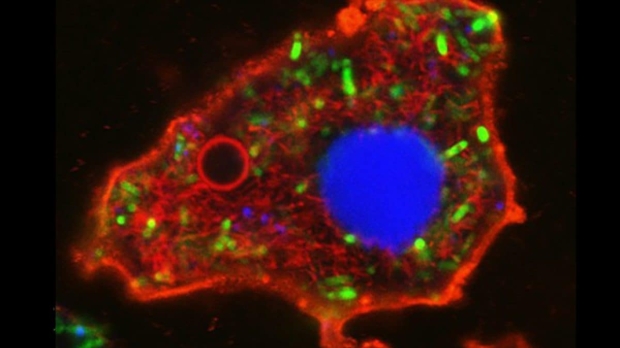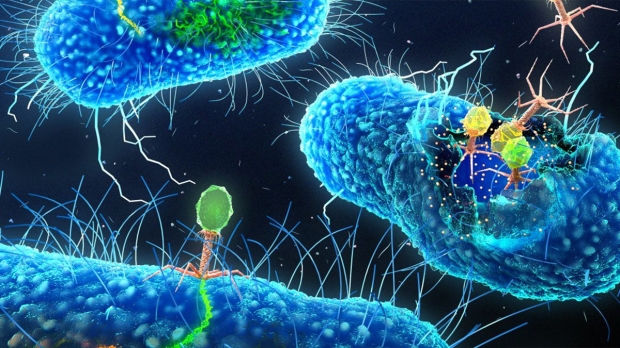A study on the new synthetic cells titled "Living material assembly of bacteriogenic protocells" has been published in the journal Nature.

Amoeba-shaped bacteriogenic protocell: membrane (red boundary); nucleus (blue); cytoskeleton (red filaments); vacuole (red circle); ATP production (green). Scale bar, 5 μm. Credit: Professor Stephen Mann and Dr. Can Xu
Researchers from the University of Bristol in the United Kingdom have made a big leap forward in developing synthetic cells, known as protocells, by using cellular components from bacteria. Making artificial cells more representative of real living cells helps researchers to study cell behavior, but previous approaches using microcapsules haven't been ideal.
To employ bacteria in the process, the team exposed two types of bacteria to micro-droplets of viscous fluid, causing one type to be absorbed into the droplet and the other type to stick to the other droplet's surface. Both bacteria types were then destroyed, and the cellular components within combined with the fluid to become membrane-coated protocells, containing thousands of complex biological components.
These bacteriogenic protocells were capable of producing adenosine triphosphate (ATP) molecules, the energy source of cells found in all living things, using glycolysis, and could create RNA and proteins. This indicates that in making the synthetic cells, the inherited bacterial components retained their functionality.
"Our living-material assembly approach provides an opportunity for the bottom-up construction of symbiotic living/synthetic cell constructs. For example, using engineered bacteria it should be possible to fabricate complex modules for development in diagnostic and therapeutic areas of synthetic biology as well as in biomanufacturing and biotechnology in general," said first author Dr Can Xu, Research Associate at the University of Bristol.
You can read more from the study here.



